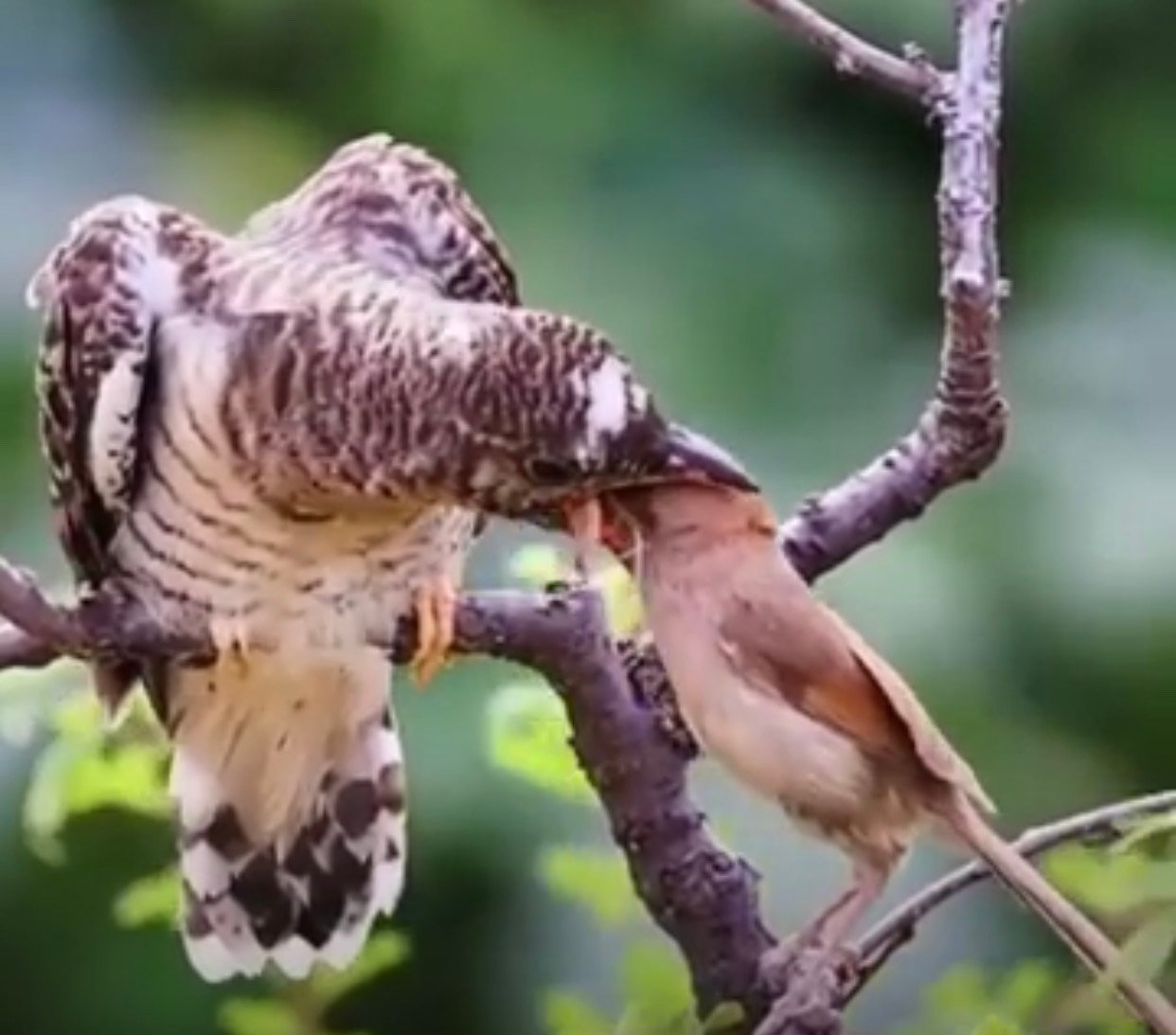A netizen who spends time to collect and present important fact; and that he/she took his/her valuable time to provide all the intricate details is highly commendable.

Misinformation spreads on social media, impacts proper understanding of biology, and disrupts conservation efforts.
A heartwarming bird video has been circulating on the net for quite some time and has gone viral. However, the interpretation provided here is scientifically incorrect! The caption of this viral video suggests: “Old age Birds cannot fly, and there are no old age homes for them.
Therefore, the small baby birds are feeding them. A great message. Hats off to nature. They don’t go to school. But they know their responsibilities; please learn from our soulful world!”
However, this video is not at all about old age caregiving in birds, as is being claimed. This video actually shares the story of the parasitic cuckoo bird, in which the females do not lay their eggs in their own nest but rather parasitize the nests of other host birds.
Cuckoos don’t make nests. This is an example where a female cuckoo bird (the big one) that has been growing under the care and support of her foster parents (the small bird) is demanding food.
The small bird is one of the foster parents whose nest has been parasitized by an adult female cuckoo that laid her egg(s) in that particular nest. The hatched chick has slowly been growing and has even become bigger in size than the foster parents.
But the parental instinct is so high in the host bird species that, in spite of the fact that this cuckoo is not her own offspring, they take every care to help raise them to adulthood.
Once the cuckoos mature as semi adults, they leave the nest of their foster parents and live an independent life. They again pair up in due course with suitable partners, mate during the onset of spring, and lay their clutch of eggs in the nest of their host species to raise their young.
These nest parasitic cuckoo species, like the Asiatic koel, don’t raise their own chicks; they leave it to their host species to hatch and raise their chicks. The behaviour has evolved over a long period of time, making them very successful in becoming nest and brood parasites. Different species of cuckoos are known all over the world and have different local host species.
It is also important to mention that all cuckoo species are not brood parasitic in nature. Ethology is the study of animal behaviour, and the correct interpretation of the behaviour of species is important for better understanding their actions and implications.
It is also important to note that interpretations of animal behaviour should not be made from the perspective of human feelings, sentiments, and emotions. It will need to be a misunderstanding and misinterpretation of specific behaviour if we try to interpret ethology in terms of human psychology.
My point is not to criticise any respected individual active on social media, but just to share the correct interpretation and information. My deepest apologies to those if, by chance (unfortunately), I have hurt anyone’s sentiment by pointing to this issue or similar wrong ethological interpretations.
This is important to avoid the dissemination of misinformation, scientifically inaccurate data or messages, or deliberate false information presented on the different social media platforms. Many viewers or readers may not have ever heard about nest and brood parasitic behaviour among different cuckoo species.
Therefore, an individual making a post must be responsible for narrating the actual story and providing the necessary facts to avoid spreading false, misleading, or wrongly interpreted information on social media. A detailed explanation could be an eye opener for many readers and/or viewers of the detailed explanation provided with a nature post.
A netizen who spends time to collect and present important facts and takes his or her valuable time to provide all the intricate details is highly commendable. It spreads education and awareness and helps sensitise people towards much needed efforts for conservation of forests, wildlife, and biodiversity.